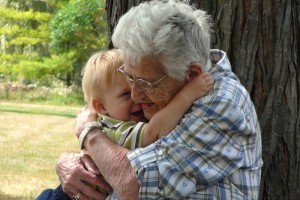Sunday
Opinion PiecesAging, Families and Shambhala
 When my mother died at age 86, her only grandchild–my daugher, then 14–asked if she could have my mother’s well-worn, simple gold wedding band. Since then, my daughter–now 21–has worn that ring nearly every day. With my mother’s death, my daughter no longer had living grandparents. Wearing the ring is her way of maintaining her sense of connection to her grandparents, her history, her family.
When my mother died at age 86, her only grandchild–my daugher, then 14–asked if she could have my mother’s well-worn, simple gold wedding band. Since then, my daughter–now 21–has worn that ring nearly every day. With my mother’s death, my daughter no longer had living grandparents. Wearing the ring is her way of maintaining her sense of connection to her grandparents, her history, her family.
As Susan Williams has pointed out in her introduction to the Spring Equinox theme for the Shambhala Times, families are made up of multiple generations: children, parents and grandparents, not to mention aunts, uncles, cousins and, in Shambhala, all those wonderful people we call “sangha” who may not be blood relations (in this lifetime), but somehow are so closely connected to us in the grand scheme of things that they seem like family. For some of us, the members of the Mukpo Clan may in practice be our closest relatives.
Old age is as much a part of family life as is childhood or adolescence. Years ago it was common for grandparents to be living with their children and grandchildren. Today, the oldest members of a family are frequently separate from the rest physically, and often emotionally.
Many sangha families are currently involved in the long-distance process of trying to help elderly parents who live far away. In this issue, see Meg Federico’s book, Welcome to the Departure Lounge, for one sangha member’s very difficult experience.
The demographics of Shambhala society, like that of North America in general, have a large bulge in the 45-60 age bracket. Currently, 50% of Shambhalians are in that age range, with 20% being over age 60.
Clearly, in the next 10-20 years, there will be a lot of old people in Shambhala society. They will be our relatives: parents, grandparents, aunts, uncles and members of the Mukpo clan. They will be us.
How will we, in Shambhala society, work with the multi-generational issue? To what extent will we maintain the connection between the young and the old? How will we relate to the needs of the older generation (whether or not they have children) as they become more in need of support?
These are questions for all of us to contemplate. They are also the focus for the Shambhala Working Group on Aging, a working group of the Sakyong’s Council. (Click here to visit our webpage.)
One important step in beginning to work with the “koan” of aging in Shambhala may be to keep the larger view of families in mind.
















